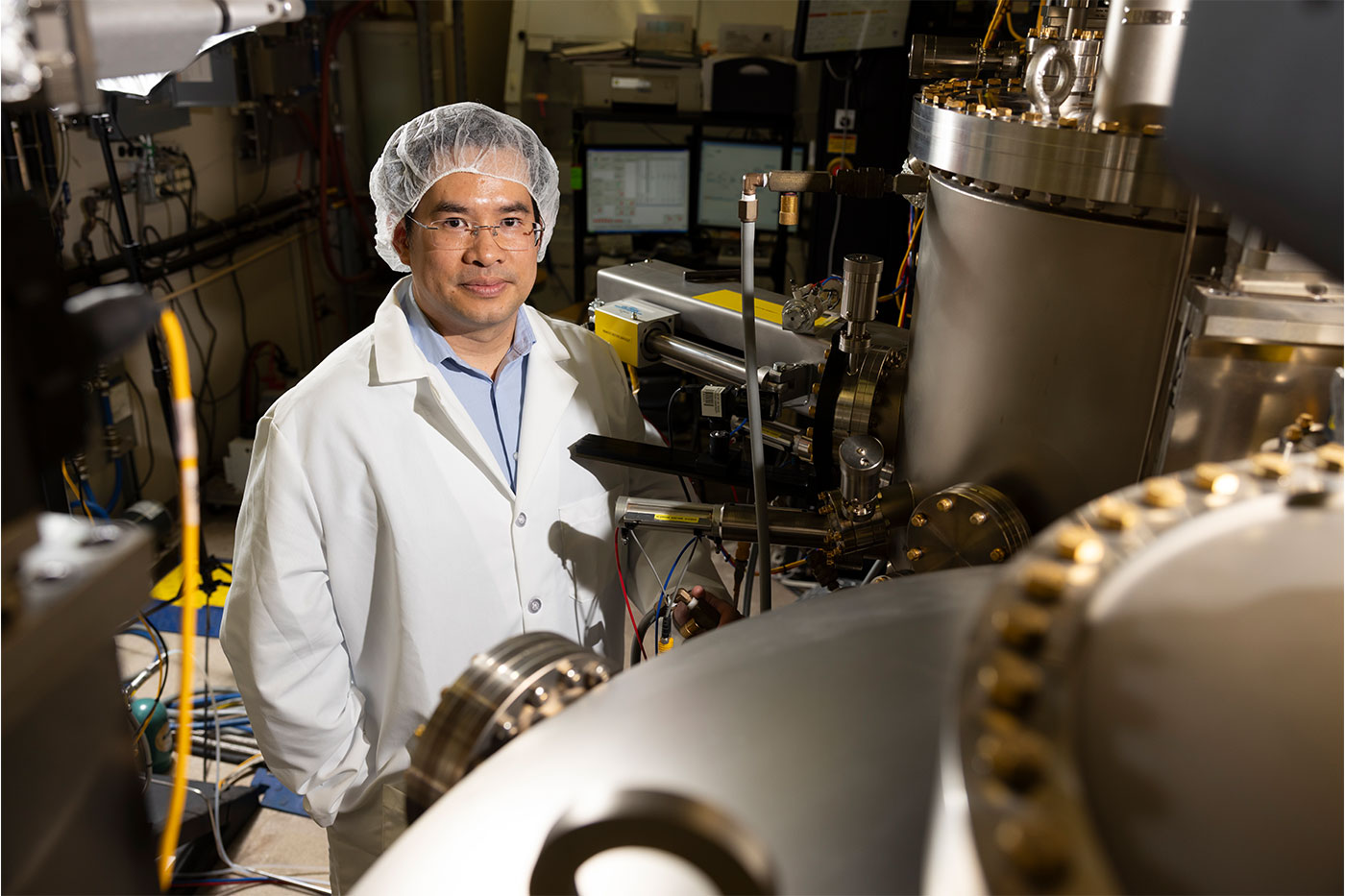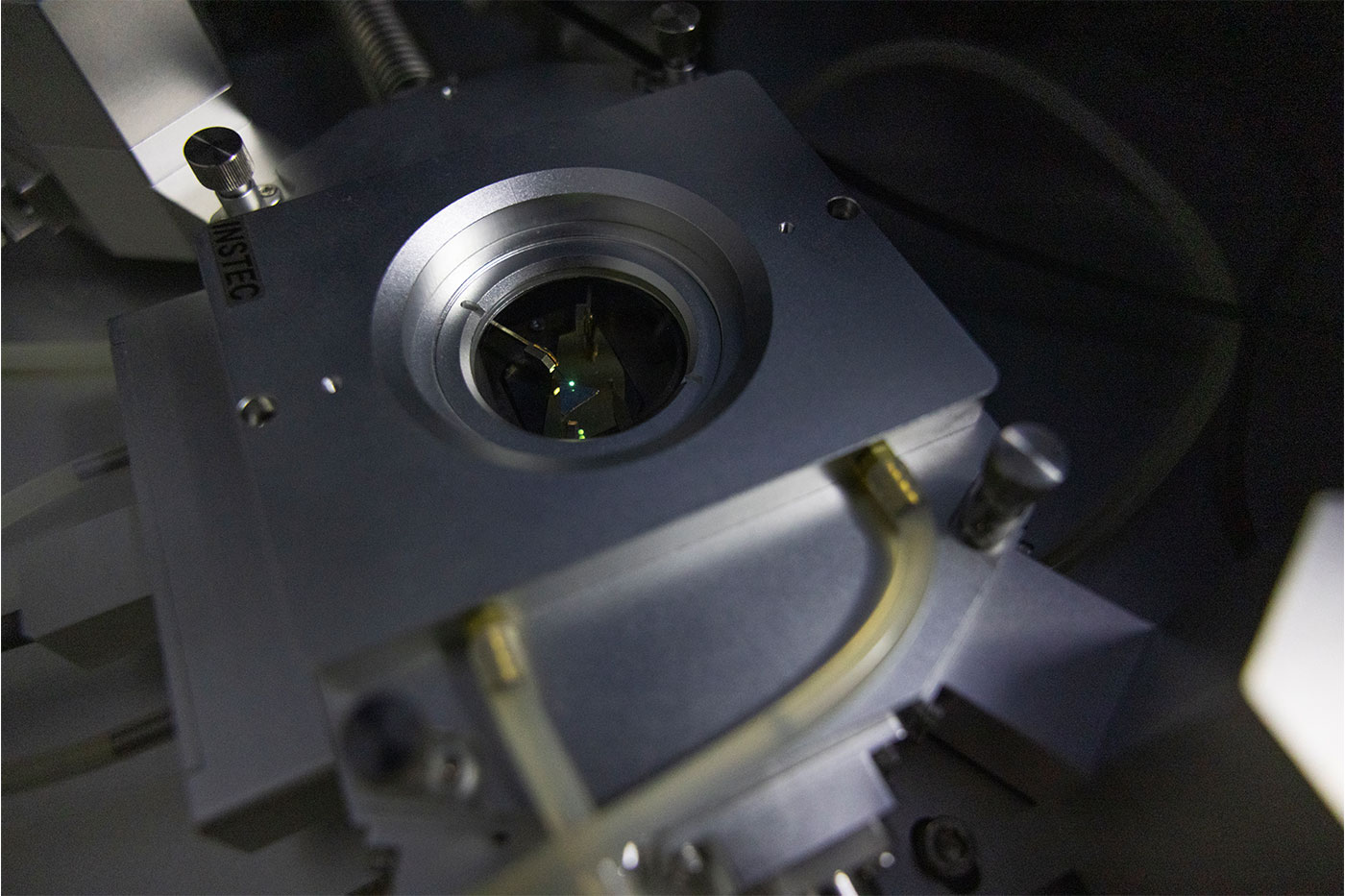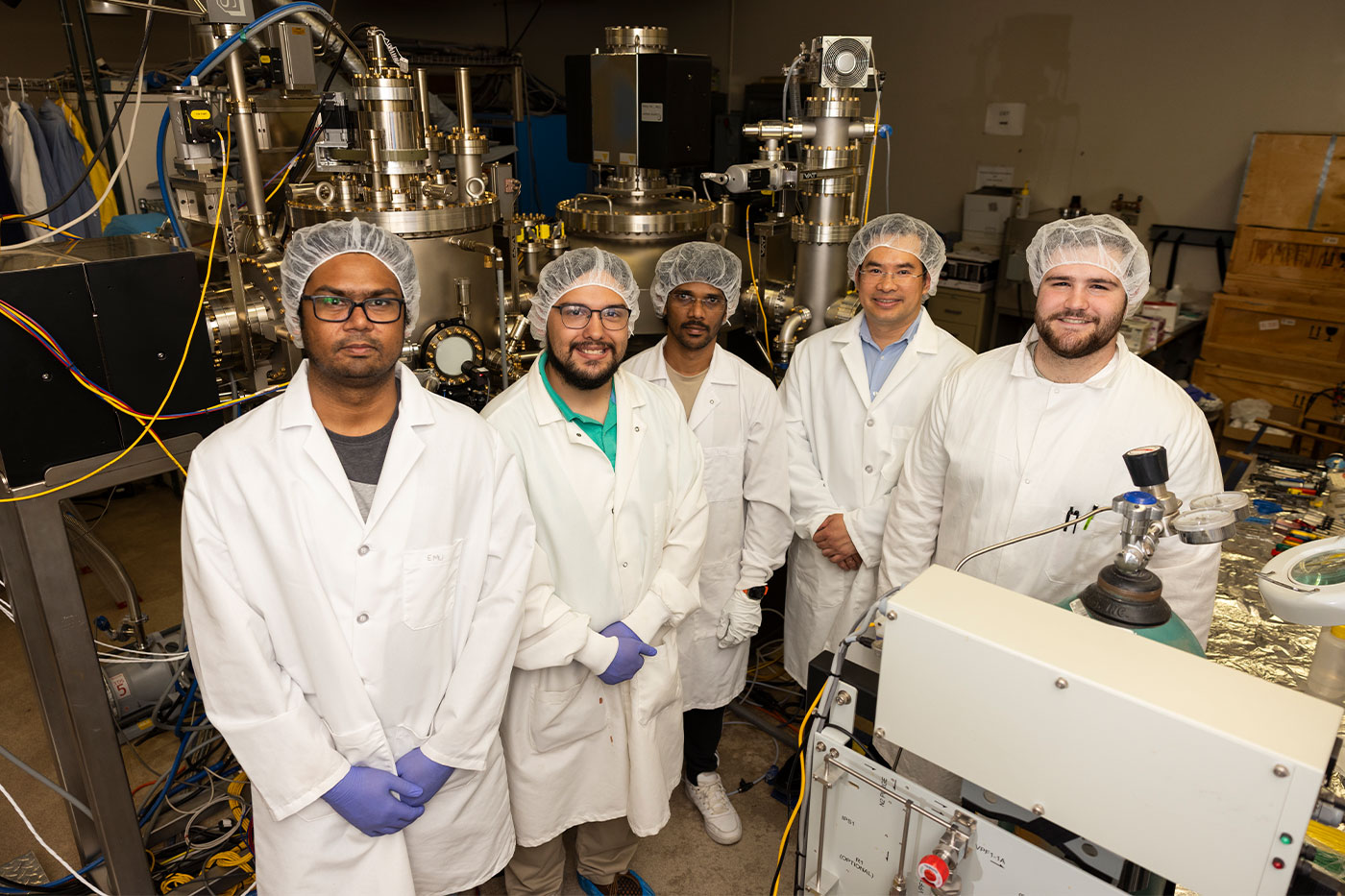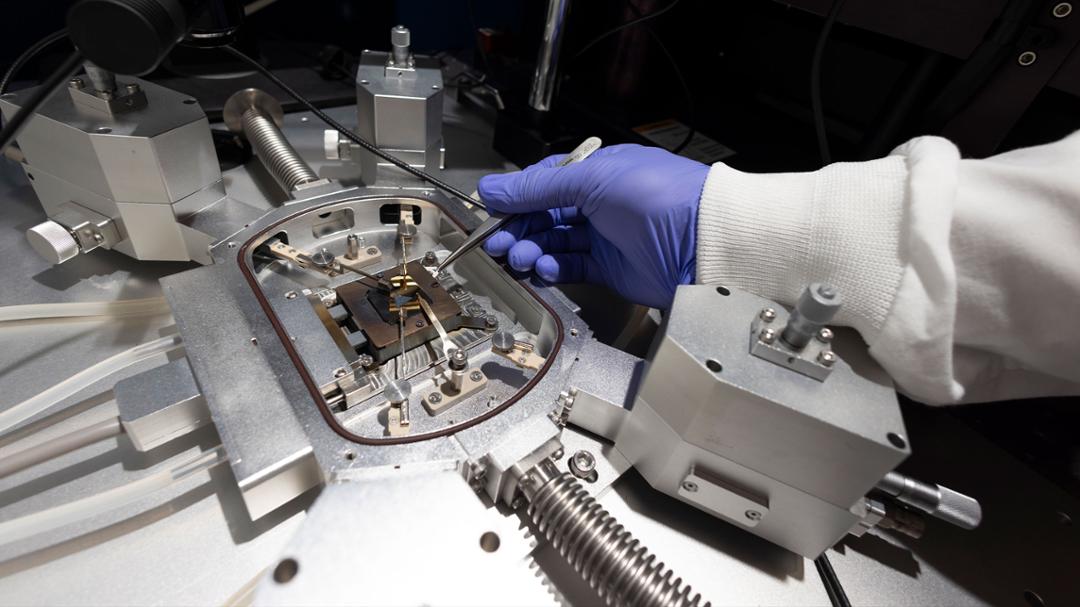Whitacre College Associate Professor Hieu P. Nguyen earned a Department of Defense grant to create high efficiency/power nanowire light sources that will keep troops safe.
It’s smaller than a pinhead but could shine light on countless possibilities for both consumers and the U.S. military.
That’s the power of the compact and high-efficiency semiconductor light-emitters being developed at Texas Tech University by Edward E. Whitacre Jr. College of Engineering Associate Professor of Electrical & Computer Engineering Hieu P. Nguyen and his team.

These light sources are suitable not only to provide more efficient lighting and higher resolution entertainment through micro-display, augmented-reality, virtual-reality and mixed-reality equipment, but they could help troops on the ground be safer and better equipped through realistic training simulations.
The national defense applications for these semiconductor light-emitters extend far beyond that, though. They can be used to develop high-power lasers used in directed energy weapons for drone and hypersonic missile defense. In addition, ultraviolet light-emitters can assist the military with air and surface disinfection, precise timing and navigation, and wireless communications, along with critical detection of water pollution, biological and chemical compounds, and bomb-making materials.
Such high potential earned Nguyen a $934,596 grant from the U.S. Department of Defense to further develop high-quality nano structures with emission wavelength in the ultraviolet to visible range for the next four years through the Nano Tech Center.
“The feedback I’ve received from them indicates that our nanowire light-emitter is very special and only a few research groups have the capability to develop such advanced nano structures,” Nguyen said. “Our nano structures can be integrated into many types of platforms, so that’s a very special and attractive aspect that has caught their attention.”

Similar technologies are made with III-nitride semiconductors, but they cannot withstand extreme temperatures. Instead, Nguyen has chosen to construct a III-nitride light-emitter utilizing nanowire structure, which allows it a wide-energy bandgap. This enables his semiconductor light-emitters to have an improved performance and a higher temperature load.
However, he would like to push the limits even more.
“Some applications could be in outer space, where the temperature is very low, or in oil drilling, where the temperature is very high inside the Earth,” he said. “We want to be able to adapt with our devices so they can be used in those harsh environments.”

The equipment at Texas Tech will enable Nguyen to test device performance at up to 1000 degrees Fahrenheit. Capabilities like this were a draw for him to join the university in 2023. He was impressed by the research facilities and the opportunity to collaborate with fellow experts within his field of wide- and ultrawide- bandgap semiconductors.
Nguyen believes this work will only increase in impact once more undergraduate and graduate students join his lab to gain hands-on experience in the device design, epitaxial growth techniques, device fabrication and characterization of semiconductor devices.
“I have the opportunity to engage many young researchers in my research group,” he said. “That is what I feel very excited for: training the next generation of researchers.”

